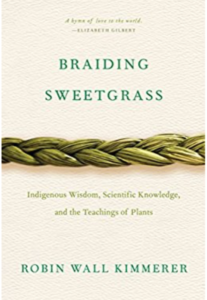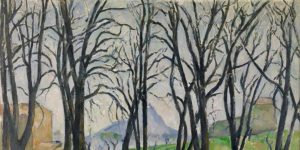Indigenous Peoples
Pachamama
November 11, 2021Sanskrit: Utkata Konasana
Western Term: Goddess or Victory
English Translation: Fierce Angle Pose
Type of Asana: Standing Pose and a fierce pose that connects to the divine feminine.
To put the world right in order we must first put the nation in order; to put the nation in order, we must first put the family in order; to put the family in order, we must first cultivate our personal life; we must first set our hearts right.
~Confucius
❧
The Eagle and The Condor Prophecy
“The Eagle and the Condor is an ancient prophecy that speaks of human societies splitting into two paths—that of the Eagle, and that of the Condor.
The path of the Condor is the path of heart, of intuition, and of the feminine. The path of the Eagle is the path of the mind, of the industrial, and of the masculine.
Read about the importance of balancing feminine and masculine energies.
The Eagle and Condor prophecy says that the 1490s would begin a 500-year period during during which the Eagle people would become so powerful that they would nearly drive the Condor people out of existence. This can be seen in the conquering of the Americas and the killing and oppressing of the indigenous peoples in the subsequent 500 years—up to and including today.
The prophecy says that during the next 500-year period, beginning in 1990, the potential would arise for the Eagle and the Condor to come together, to fly in the same sky, and to create a new level of consciousness for humanity. The prophecy only speaks of the potential, so it’s up to humanity to activate this potential and ensure that a new consciousness is allowed to arise.”
As the years pass, I unearth layer after layer of the habitual thinking that caused me suffering. Most of it would be considered pathological in a clinical sense. It is simply the typical thinking of my culture, class, gender, time, and space, and I have internalized all of it.
I am also encountering the stored memories of many lifetimes. The experience is akin to cleaning out your grandmother’s attic and discovering, amongst the trunks and boxes, some clues to your family’s behavior.
My years on the [planet] have revealed to me, first, that I have suffered profoundly by allowing the flawed thinking of the world, [others], to define me, and second, that there has always been a part of me that has known better. I think of the part of me as sanity.
-Rolf Gates
Shhhhhh…the trees are speaking.
November 8, 2019Robin Wall Kimmerer:
In the old times, our elders say, the trees talked to each other. They’d stand in their own council and craft a plan. But scientists decided long ago that plants were deaf and mute, locked in isolation without communication. The possibility of conversation was summarily dismissed. Science pretends to be purely rational, completely neutral, a system of knowledge-making in which the observation is independent of the observer. And yet the conclusion was drawn that plants cannot communicate because they lack the mechanisms that animals use to speak. . . . But pollen has been carried reliably on the wind for eons, communicated by males to receptive females to make . . . nuts. If the wind can be trusted with that fecund responsibility, why not with messages?
There is now compelling evidence that our elders were right—the trees are talking to one another. They communicate via pheromones, hormonelike compounds that are wafted on the breeze, laden with meaning. Scientists have identified specific compounds that one tree will release when it is under the stress of insect attack—gypsy moths gorging on its leaves or bark beetles under its skin. The tree sends out a distress call: “Hey, you guys over there? I’m under attack here. You might want to raise the drawbridge and arm yourselves for what is coming your way.” The downwind trees catch the drift, sensing those few molecules of alarm, the whiff of danger. This gives them time to manufacture defensive chemicals. . . . The individual benefits, and so does the entire grove. Trees appear to be talking about mutual defense. . . . There is so much we cannot yet understand with our limited human capacity. Tree conversations are still far above our heads.
Some studies of mast fruiting have suggested that the mechanism for synchrony comes not through the air, but underground. [1] The trees in a forest are often interconnected by subterranean networks of mycorrhizae, fungal strands that inhabit tree roots. The mycorrhizal symbiosis enables the fungus to forage for mineral nutrients in the soil and deliver them to the tree in exchange for carbohydrates. The mycorrhizae may form fungal bridges between individual trees, so that all the trees in a forest are connected. These fungal networks appear to redistribute the wealth of carbohydrates from tree to tree. A kind of Robin Hood, they take from the rich and give to the poor so that all the trees arrive at the same carbon surplus at the same time. They weave a web of reciprocity, of giving and taking. In this way, the trees all act as one because the fungi have connected them. Through unity, survival. All flourishing is mutual.
Fr. Richard Rohr, Center for Action & Contemplation:
‘For too long science and faith fell into the “sin of certainty,” each claiming Truth only for themselves and ignoring the beautifully symbiotic relationship that exists between them. Scientists like Robin Wall Kimmerer are an essential part of the Great Turning, dissolving the artificial binaries that have walled them off from one another. May we all have minds and hearts open enough to integrate the wisdom of our spiritual elders.’
Are trees social beings? In this international bestseller, forester and author Peter Wohlleben convincingly makes the case that, yes, the forest is a social network. He draws on groundbreaking scientific discoveries to describe how trees are like human families: tree parents live together with their children, communicate with them, support them as they grow, share nutrients with those who are sick or struggling, and even warn each other of impending dangers. Wohlleben also shares his deep love of woods and forests, explaining the amazing processes of life, death, and regeneration he has observed in his woodland.
After learning about the complex life of trees, a walk in the woods will never be the same again.


